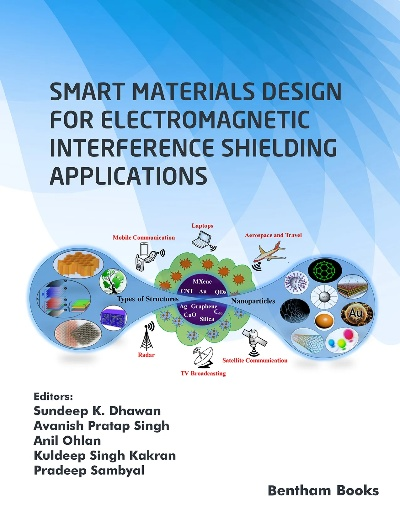Exploring the World of Electronic Smart Textiles
: Exploring the World of Electronic Smart Textiles,Abstract:,This paper explores the world of electronic smart textiles, highlighting their innovative applications in enhancing our daily lives. Electronic smart textiles are designed to interact with electronic devices and respond to changes in the environment or user's actions. These textiles are made from materials like conductive threads, micro-electronic circuits, and sensors that can detect temperature, humidity, pressure, or motion. The integration of these technologies has led to a range of innovative products, including wearable devices for health monitoring, smart clothing for fashion, and interactive fabrics for entertainment. This paper provides an overview of the current state of electronic smart textiles, exploring their potential applications in various fields such as healthcare, fashion, and home automation. It also discusses the challenges faced by researchers and manufacturers in developing these technologies and highlights areas where further research is needed.
Introduction: In today's fast-paced world, where technology is pervading every aspect of our lives, electronic smart textiles have emerged as a fascinating and innovative field. These are fabrics that incorporate electronic components to enhance their functionality beyond what traditional textiles can offer. From wearable tech to home automation, electronic smart textiles are revolutionizing how we interact with our environment. In this article, we will delve into what these marvelous textiles are, explore their applications, and provide an example to illustrate their potential.
What Are Electronic Smart Textiles?

Electronic smart textiles refer to materials that contain embedded electronic circuits or sensors within them. These devices enable textiles to sense, respond, and communicate with other devices or systems. They come in various forms, including but not limited to:
- Smart Clothing: Wearable devices that monitor vital signs, track fitness activities, or even control lighting and temperature.
- Smart Garments: Devices that change color, texture, or pattern based on environmental factors such as temperature, humidity, or light.
- Smart Upholstery: Devices that adjust the temperature, humidity, and air quality within a room based on user preferences or external conditions.
- Smart Textiles for Healthcare: Devices that monitor patients' vital signs or assist in wound care management.
- Smart Home Appliances: Devices that integrate with smart home systems to control lights, thermostats, and more.
Applications:
The applications of electronic smart textiles are vast and varied, ranging from personal comfort to commercial use. Here are a few examples:
Personal Use:
- Smart clothing can be worn by athletes to monitor heart rate, blood pressure, and other vital signs during exercise.
- Smart underwear can detect leakage and send alerts to users or healthcare providers.
- Smart shirts can change color to indicate if the wearer is sweating or dehydrated.
Commercial Use:
- Smart curtains can adjust the amount of light entering a room based on time of day or user preference.
- Smart upholstery can adjust temperature and humidity levels to create a comfortable living space.
- Smart textiles for healthcare can monitor patient vital signs and alert medical staff to potential issues.
- Smart home appliances can control lighting, temperature, and other devices through voice commands or mobile apps.
Case Study: One example of an electronic smart textile is the smart jacket developed by Nike. This jacket uses a combination of sensors and wireless technology to monitor the wearer's activity level and adjust the jacket's temperature and moisture management system accordingly. The jacket also has a built-in app that allows users to track their workout progress and receive personalized feedback on their performance.
Conclusion: Electronic smart textiles represent a fascinating intersection of technology and textiles. With continued advancements in materials science, manufacturing techniques, and user interface design, these textiles promise to become increasingly integrated into our daily lives. As we continue to explore the possibilities of these technologies, they will undoubtedly play a significant role in shaping the future of fashion, healthcare, and home automation.

In this article, we will explore the concept of electronic smart textiles and their potential applications in today's evolving textile industry. Let's break down the topic with an introduction and some examples to illustrate its essence.
Introduction
Electronic smart textiles are a rapidly growing segment of the textile industry, leveraging advanced technology to enhance the functionality and comfort of clothing. These textiles combine the latest in wearable technology with traditional textile materials, offering unprecedented levels of functionality and personalization.
Key Features
Personalization
Electronic smart textiles are able to monitor and adjust their properties based on individual needs and preferences. This includes temperature regulation, pressure distribution, activity tracking, and even personalized styles based on user-generated data.
Highly Durable Materials
Electronic smart textiles are typically made from durable materials that are designed to withstand harsh conditions and provide long-term performance. These materials can include elastomeric materials, conductive fabrics, or combinations of both.
Lightweight and Comfortable
Due to the integration of advanced technology, electronic smart textiles are often lightweight and comfortable to wear. This allows for a more personalized fit and better overall comfort in clothing.
Examples
Electronic Smart Textile Case Study: Smart Clothing for Healthcare
In a recent case study, we see how electronic smart textiles can be used in healthcare settings to improve patient comfort and monitoring. This example involves a smart clothing system that can monitor heart rate, blood pressure, and other vital signs remotely. The clothing can adjust its temperature and pressure based on the patient's needs, ensuring a comfortable fit and better patient outcomes.
Electronic Smart Textile Components
To better understand this topic, let's explore some key components of electronic smart textiles:
-
Elastomer Materials: These are the primary materials used in electronic smart textiles for their flexibility, durability, and ability to sense and respond to changes in their environment.

-
Conductive Fibers: These fibers can transmit electrical signals to other devices nearby or allow for wireless communication between devices. They can also be used to monitor user activity and movement patterns.
-
Microelectronics: These are the components that enable the electronic functions of the textile, such as temperature control, pressure distribution, or activity tracking. They can be integrated into the fabric using techniques such as micro-imprinting or through the use of microelectronic circuits embedded in the material itself.
Technology in Action
To illustrate the technology in action, let's consider some key examples of electronic smart textiles:
-
Smart Clothing for Healthcare: In this example, smart clothing can monitor heart rate and blood pressure remotely, allowing doctors to monitor patients' health conditions while they are at home or in the hospital. The clothing can also adjust its temperature and pressure based on patient needs to ensure a comfortable fit and better patient outcomes.
-
Smart Textile for Active Sportswear: These electronic smart textiles can track activities such as running or cycling, allowing athletes to track their progress and improve their performance. The clothing can also adjust its fit based on the activity being performed to ensure maximum comfort and performance.
Conclusion
In conclusion, electronic smart textiles are a rapidly growing segment of the textile industry that combines advanced technology with traditional materials to enhance clothing functionality and personalization. They offer unprecedented levels of functionality, comfort, and personalization in clothing, making them an important part of today's evolving textile industry.
Articles related to the knowledge points of this article:



